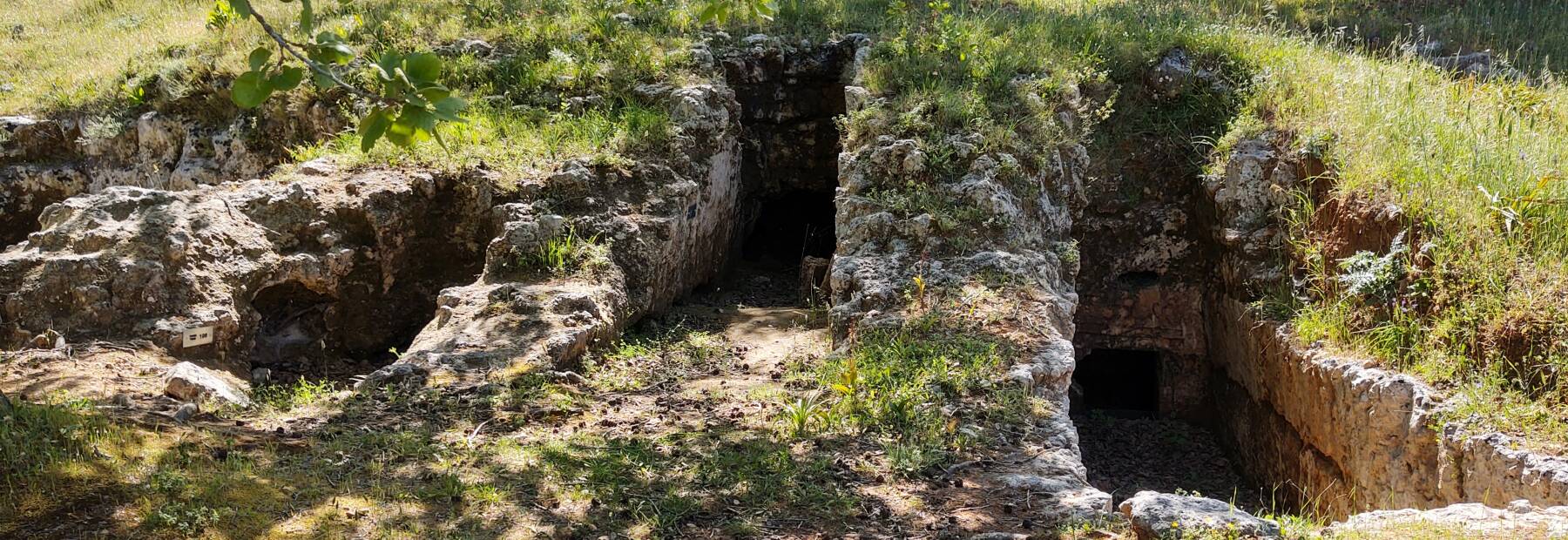
Minoan Chamber Tombs
Minoan Rock-Cut Chamber Tombs at Armeni
I was traveling through western Crete
and I had been on the north coast.
I had been in
Rethymno,
and then moved on west to where
Aptera
overlooks Souda Bay and the
Aegean Sea.
Now I was heading south to the coast on the
Libyan Sea.
Along the way I wanted to see the
Minoan tombs carved from solid rock
at Armeni.
The Armeni Site
There are 231 tombs carved into the rock in this νεκρόπολη or necropolis, literally a "city of the dead". The tombs date from the 14th through 12th centuries BCE. This side is sometimes described as "Postminoan", but it was built by what we call the Minoan civilization. They built the cemetery during what's called the Minoan Postpalatial period, after the last great palace of Knossos had been completed.
The tombs were carved into the relatively soft limestone bedrock using bronze tools. Some were not completed, abandoned when a partially carved project struck harder stone. Fortunately for us, most of the stone was soft enough to carve but hard enough to remain well preserved today.
They were discovered in the 1960s, with most of them untouched and holding many objects and human remains.

One is a tholos tomb, a cylindrical structure with a domed roof. All the others are a form of passage tombs. You access a tomb chamber through a δρόμος or dromos, a passage carved down into the stone. They range from ramps to shallow steps to a staircase. The center one here has a rather shallow ramp.
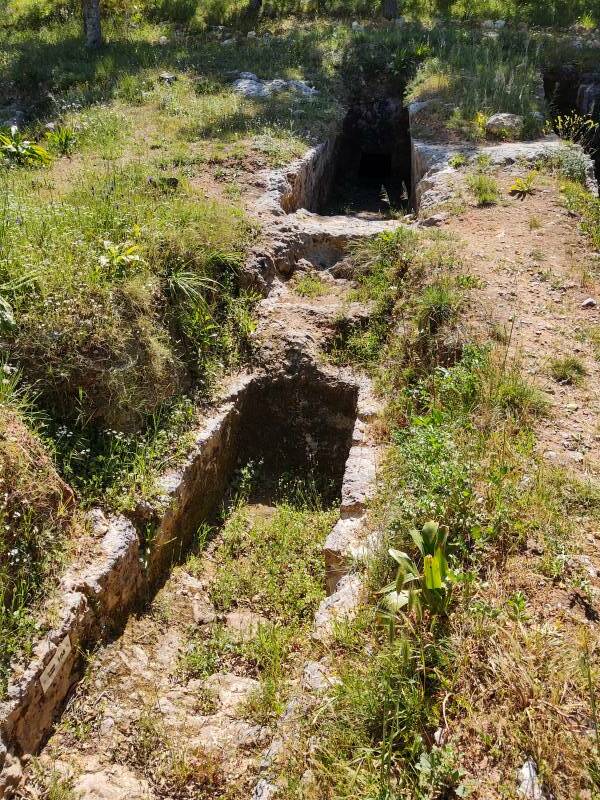
Mount Vrysinas is an 858-meter peak about three kilometers to the east-southeast. Its peak sanctuary is one of the most significant in Crete.
The tombs are all aligned with their openings facing toward the peak of Mount Vrysinas.
Excavations at the peak sanctuary on Mount Vrysinas have yielded very important discoveries. These date from the Proto-Palatial period of 1900–1700 BCE through the Post-Palatial period and the end of the Minoan era, 1450–1050 BCE.
The original academic model of Minoan chronology was based on Early, Middle, and Late Minoan, or EM, MM, and LM, each divided into periods I, II, and III. That model was created by Arthur Evans, who excavated Knossos and assigned the name "Minoan" to the civilization. Other archaeologists have devised more meaningful chronologies for the Minoans.
Hundreds of zoomorphic and anthropomorphic clay figures have been found at the sanctuary. These had been offered by the Minoans to their chief goddess.
A four-sided prism made from deep red jasper was found in 2012. It bears the Minoan hieroglyphs. That script, used from 2100 to 1700 BCE, is the oldest known Minoan writing system. That prism is the only known example of Minoan hieroglyphs found in western Crete.
| One of several versions of Minoan chronology | ||
| 3500–2900 BCE | EM I | Prepalatial |
| 2900–2300 BCE | EM II | |
| 2300–2100 BCE | EM III | |
| 2100–1900 BCE | MM IA | |
| 1900–1800 BCE | MM IB | Protopalatial |
| 1800–1750 BCE | MM IIA | |
| 1750–1700 BCE | MM IIB | Neopalatial |
| 1700–1650 BCE | MM IIIA | |
| 1650–1600 BCE | MM IIIB | |
| 1600–1500 BCE | LM IA | |
| 1500–1450 BCE | LM IB | Postpalatial |
| 1450–1400 BCE | LM II | |
| 1400–1350 BCE | LM IIIA | |
| 1350–1100 BCE | LM IIIB | |
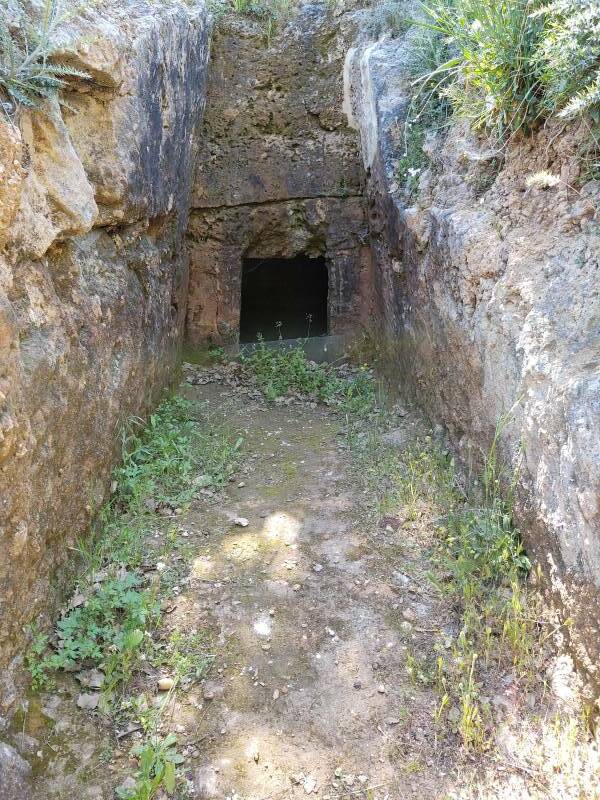
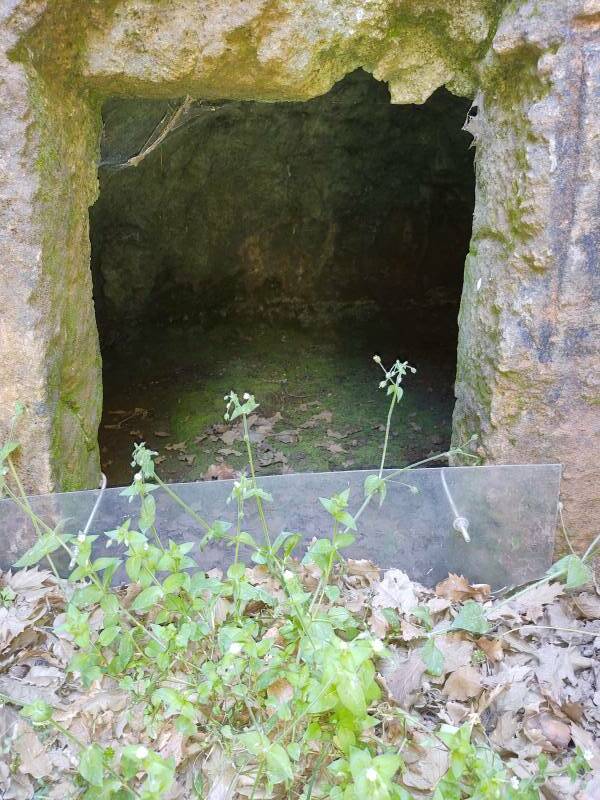
This tomb has a fairly small chamber. The opening into the chamber is about 30 to 40 cm wide and tall.

A tomb entrance was originally covered by a large stone slab or a barrier built from multiple smaller stones. Many of the slabs still stand beside the openings they once closed. Unworked large stones and standing stones of slab or pyramidal share were set up as markers over the tombs.
Each dromos is cut with a reverse taper so its walls are closer together at the top.
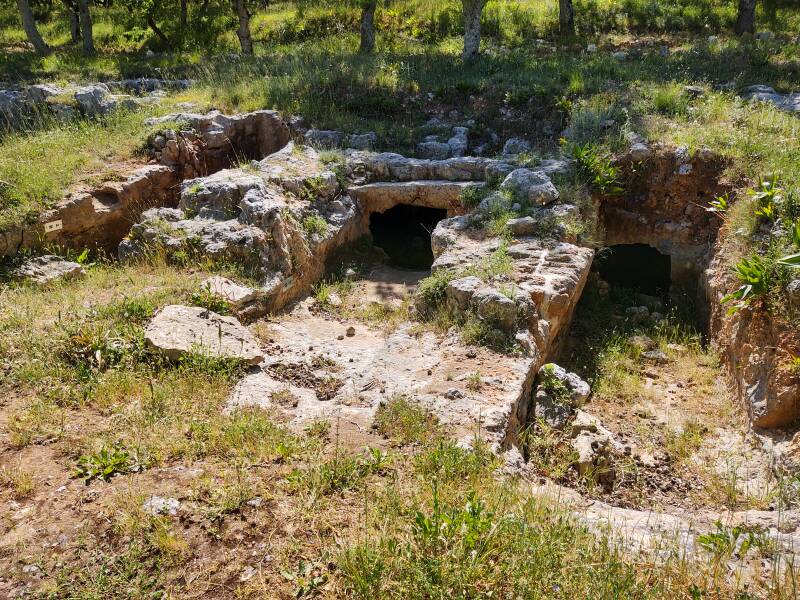
The sides of the entrance passages and, less often, the chamber walls, contain niches of uncertain purpose.
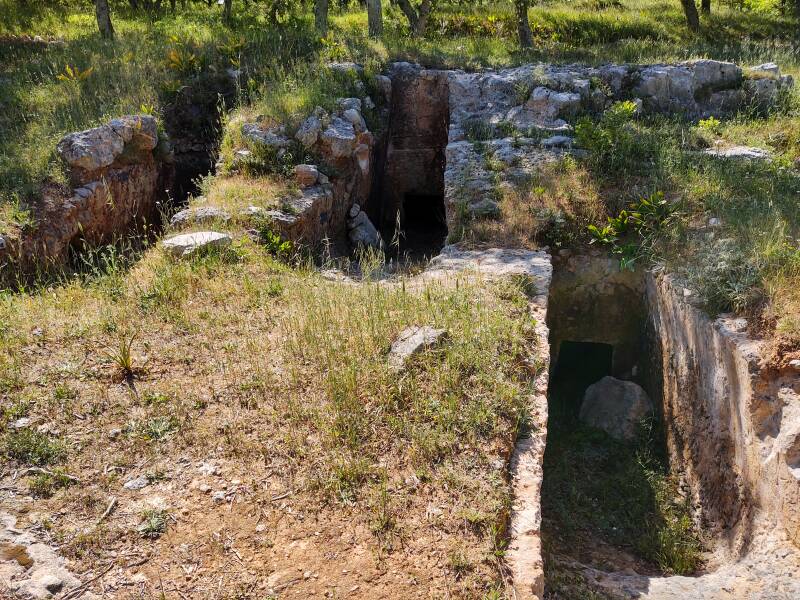
These were family tombs containing multiple burials. A body was placed directly on the floor or, in the case of a more elite individual, in a larnax or clay coffin that resembles a bathtub with a lid. They were just large enough to contain a body with the limbs all folded, or smaller ones just held cremated ashes. Researchers found 32 clay larnaxes in the tombs.
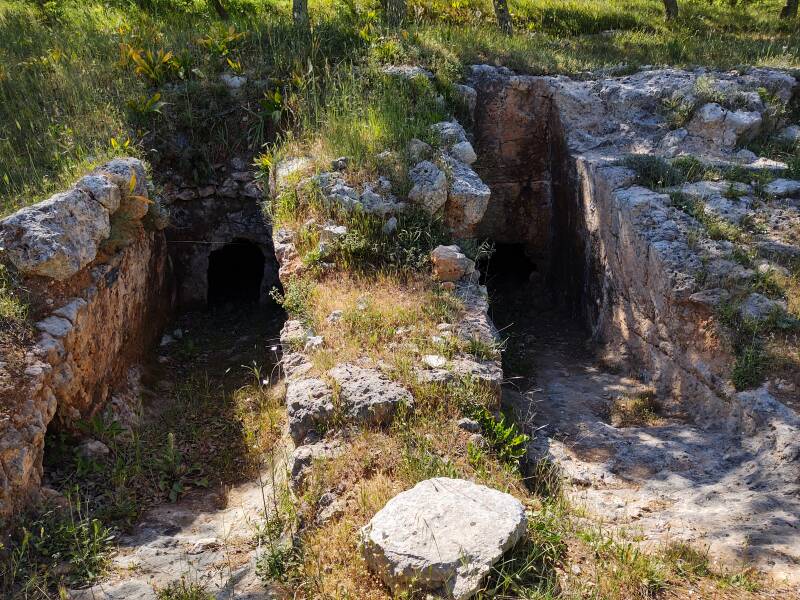
When a new body was added to a tomb, the bones of the previous bodies were piled at the edges of the chamber.
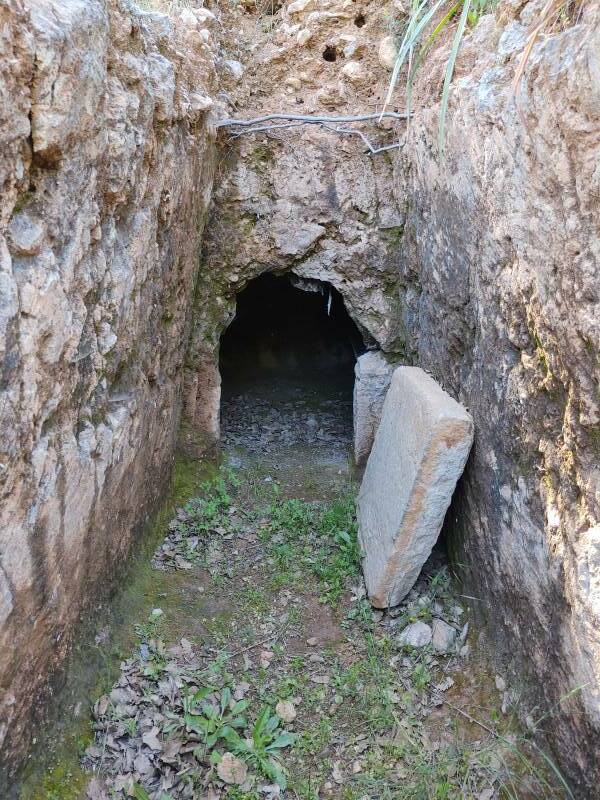
The offerings left in the graves provide information about the art, religion, and culture of the people.
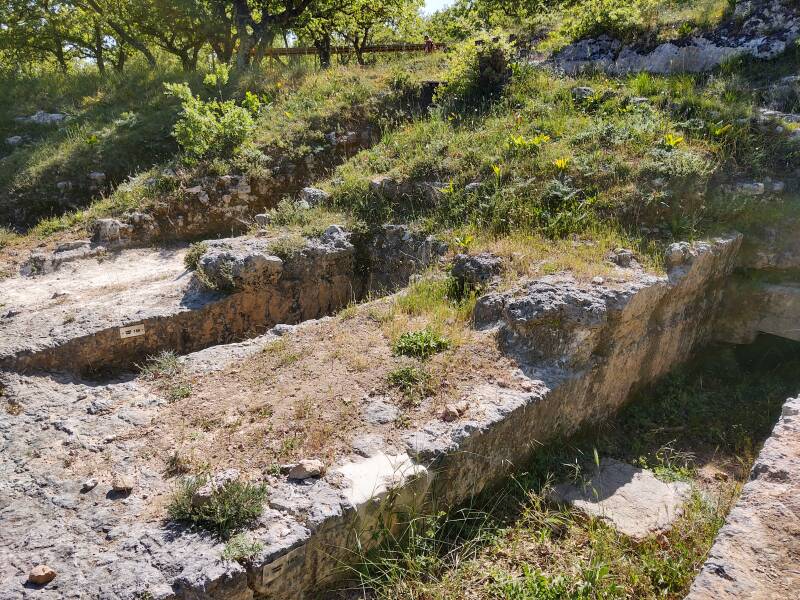
The items found here can be seen in the archaeology museums in Rethymno and Chania.

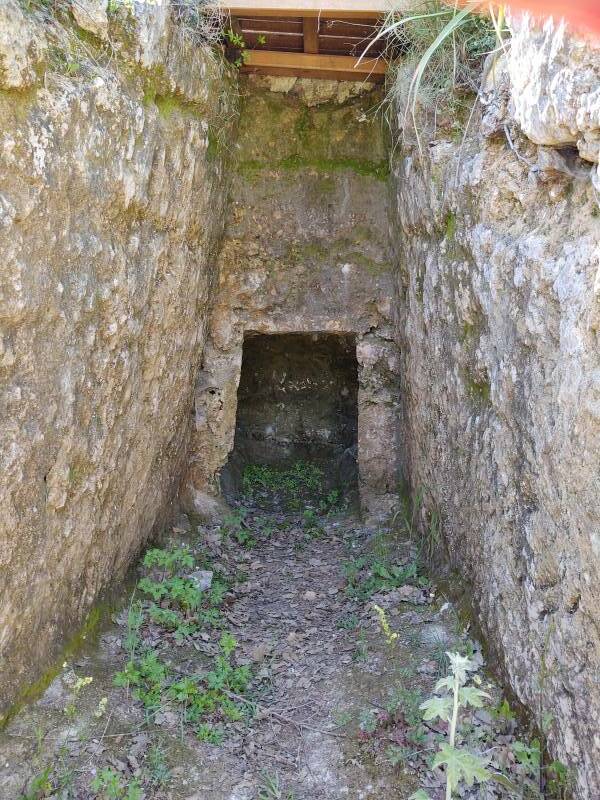
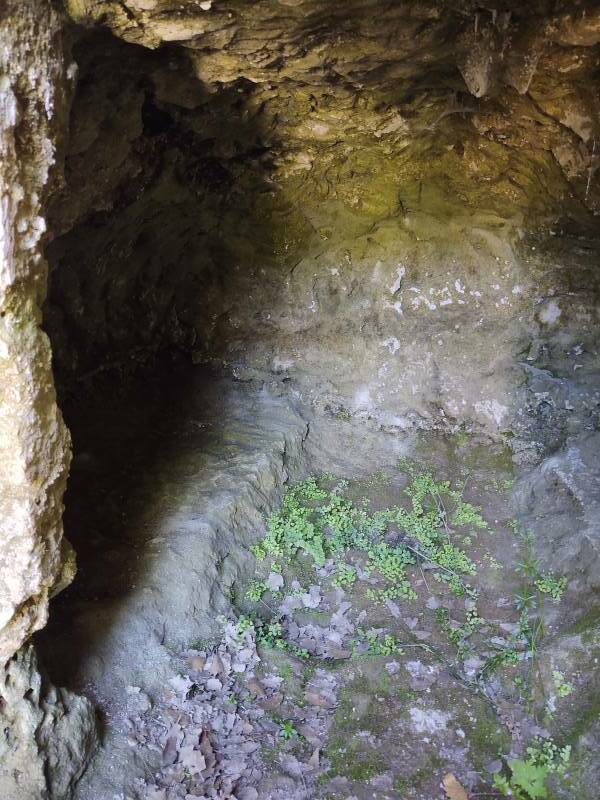
Tomb 159 is the largest tomb of the necropolis. Its dromos or passage is 15.5 meters long, with 25 steps.

It dates to the LM IIIA2-B1 period, 1385–1240 BCE.

The dromos or entrance passage starts fairly steep, similar to a staircase inside a house. Then the steps become progressively shorter as you descend.

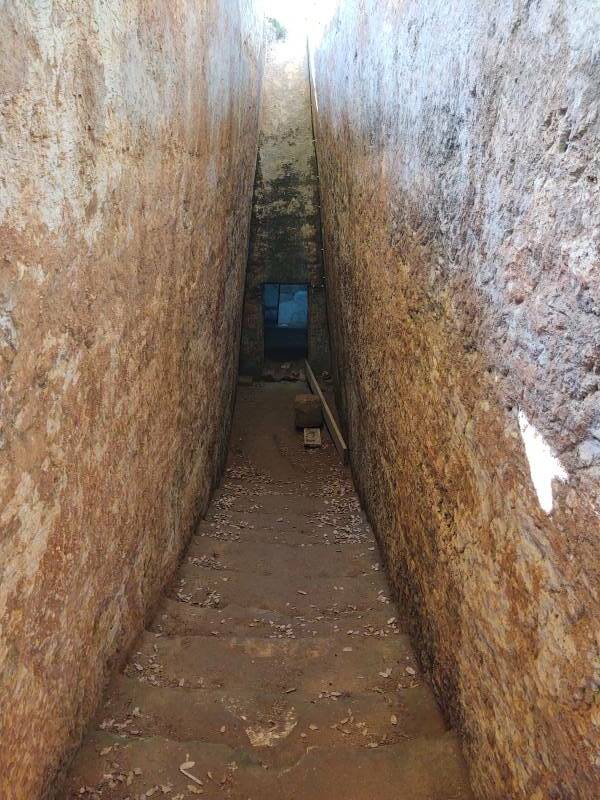
The passage walls show signs of the bronze tools used to excavate it. The increasingly shallow steps end in a short ramp.
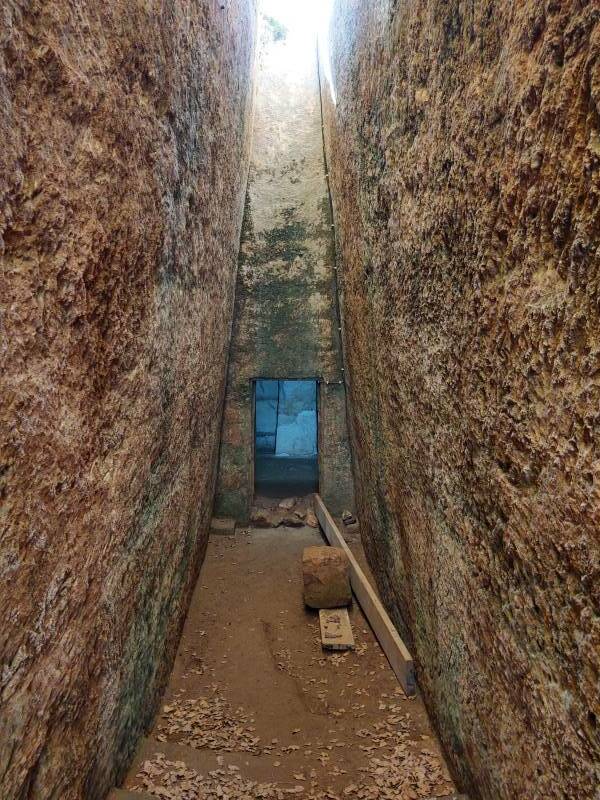
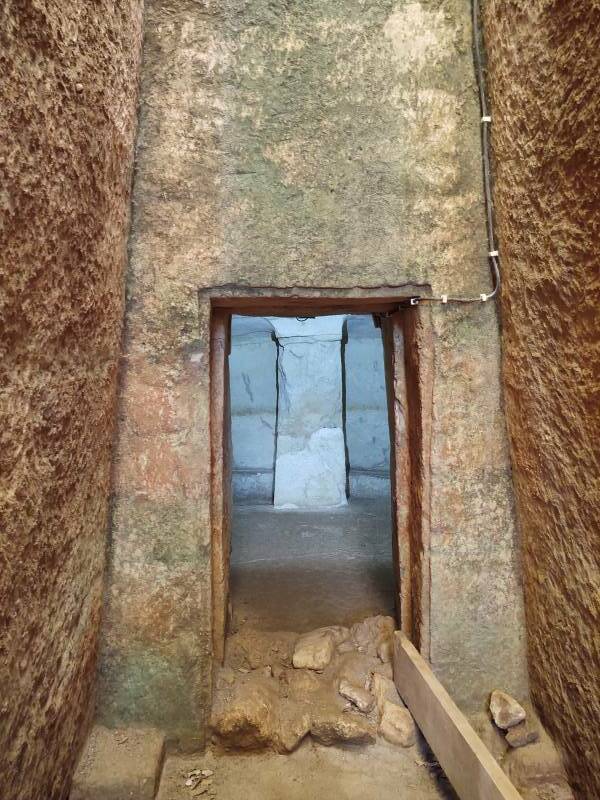
The short bases on either side of the entry are thought to have held held half-columns.
A low bench runs around all sides of the tomb chamber. The square bases at the corners of the chamber probably held wooden columns.
The niche in the floor near the rear wall held human bones.
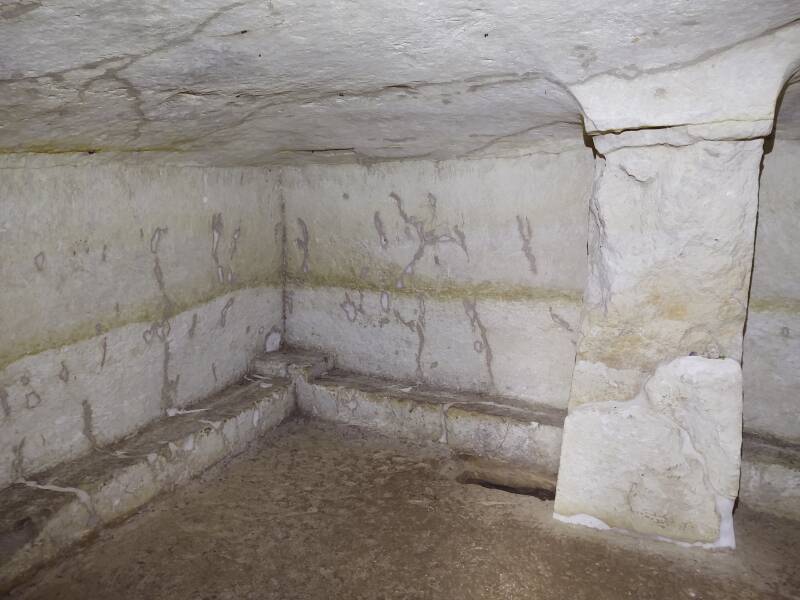
This tomb had been looted back when the cemetery was still in use. But it still yielded rich finds. Three broken larnaxes were still in the chamber. They bore painted representations of Minoan symbols, the double axe and the horns of consecration.
A steatite pendant bearing a Linear A inscription was found here. Linear A was used about 1800–1450 BCE to write the language (or languages) of the Minoan people. Minoan heiroglyphs were used about 2100–1700 BCE, meaning that the two writing systems overlapped for about a century.

The pillar on the rear wall of the chamber was also carved from the solid rock. It and the bench are like the floor, ceiling, and walls, all carved from the bedrock.
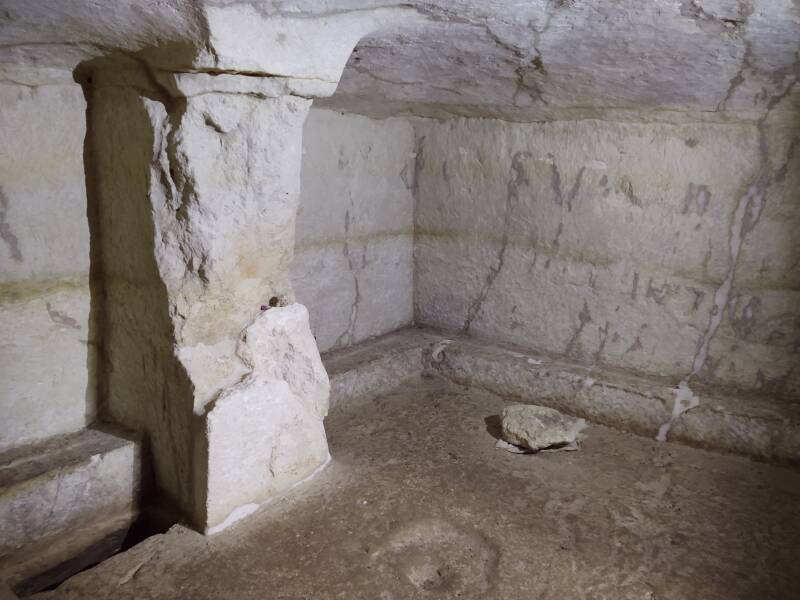
Exiting the tomb chamber, you climb into the light in the direction of the peak sanctuary on Mount Vrysinas.
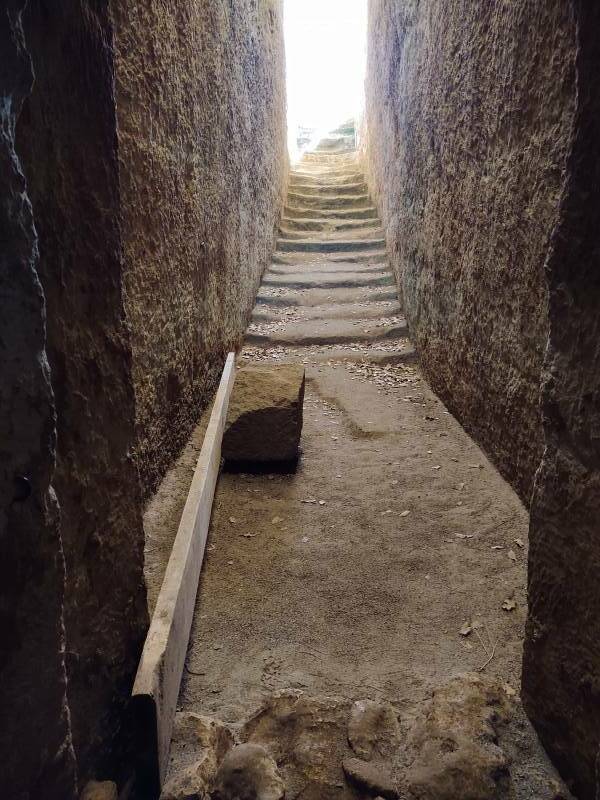
Artifacts found in the chamber tombs include jewelry, bronze tools and vessels, seal stones, stone vases, and pottery. Four of the seal stones had been imported from empires east of the Mediterranean.
The most striking find was a Mycenaean-type helmet covered in boar's tusks, as described by Homer in The Iliad.
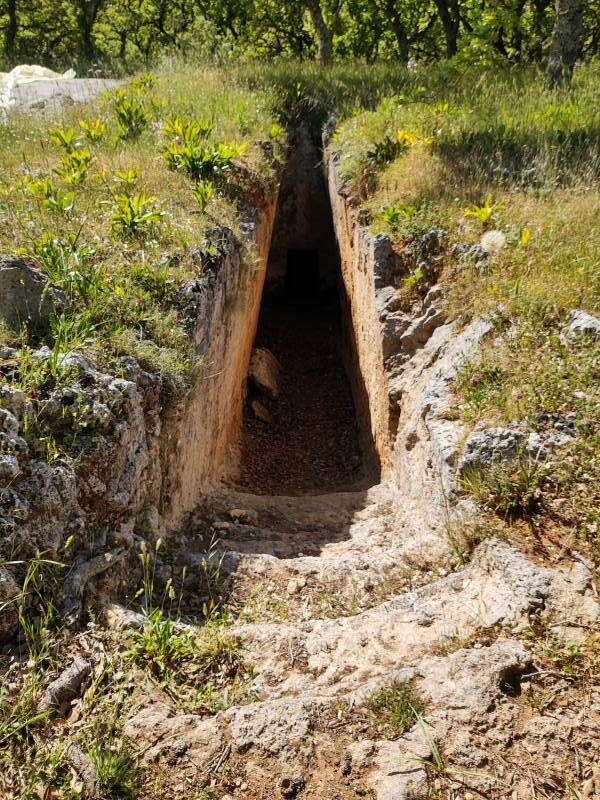
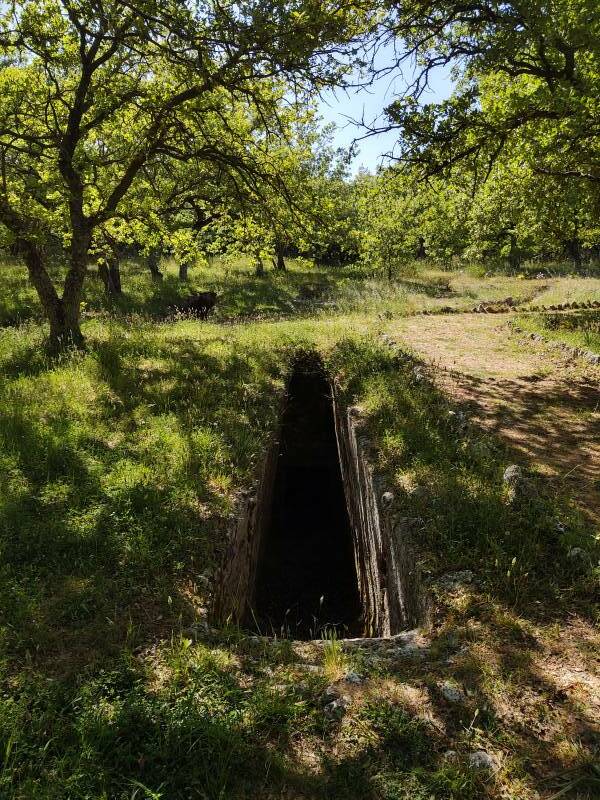
The majority of the roughly 800 clay vessels were from nearby workshops. A few were imported from Knossos, from Palaikastro in eastern Crete, and from the Argolid in the Peloponnese, on the Greek mainland across 180 kilometers of open Aegean Sea.

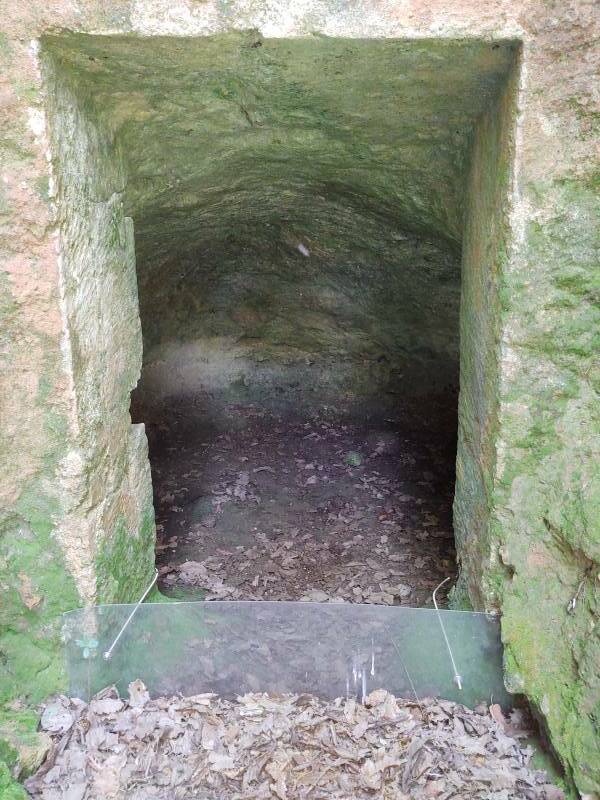
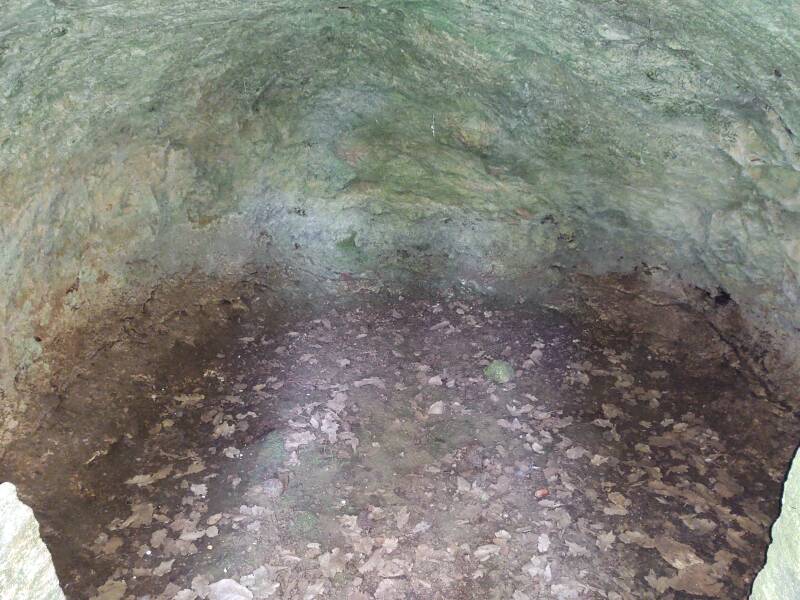
Tomb 11, like Tomb 159, dates to the LM IIIA2-B1 period, 1385–1240 BCE.
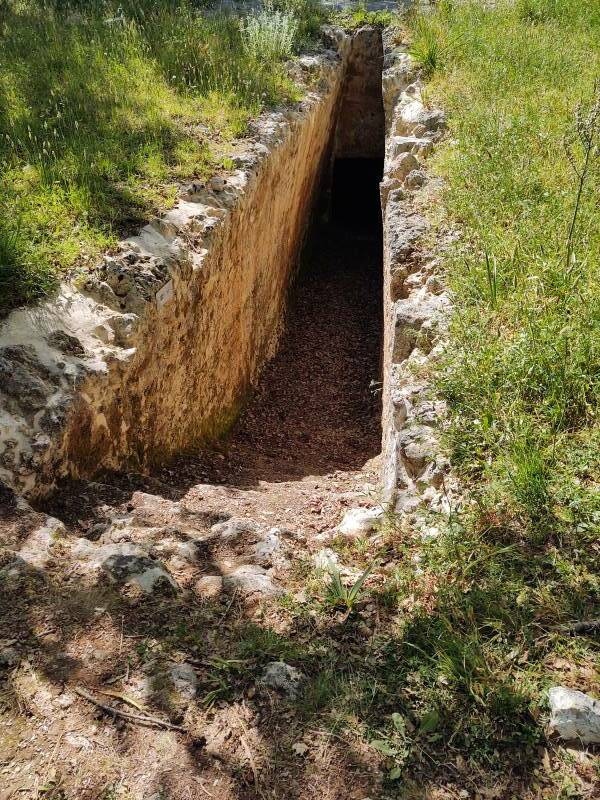
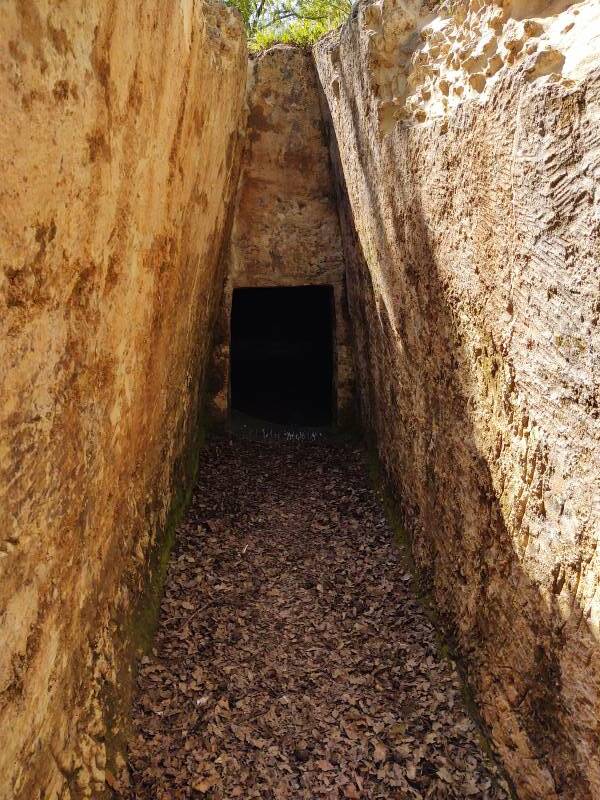
The rear wall of the chamber has a low cut bench and a Minoan-style column cut in relief.

A larnax found here had a saddle-shaped lid and contained human bones.

The larnax had a representation of a deity in a sacred grove, and another of ritual hunting.

Over 500 skeletons were found at the site, yielding information about the diet and health of the people. Surprisingly, being just a little over five kilometers from the coast, they had no marine food in their diets.
Child mortality was high, and the average life expectancy was a short 28 to 31 years for men and 20 to 25 for women. The shorter average lifespan for women was probably due to death during childbirth.
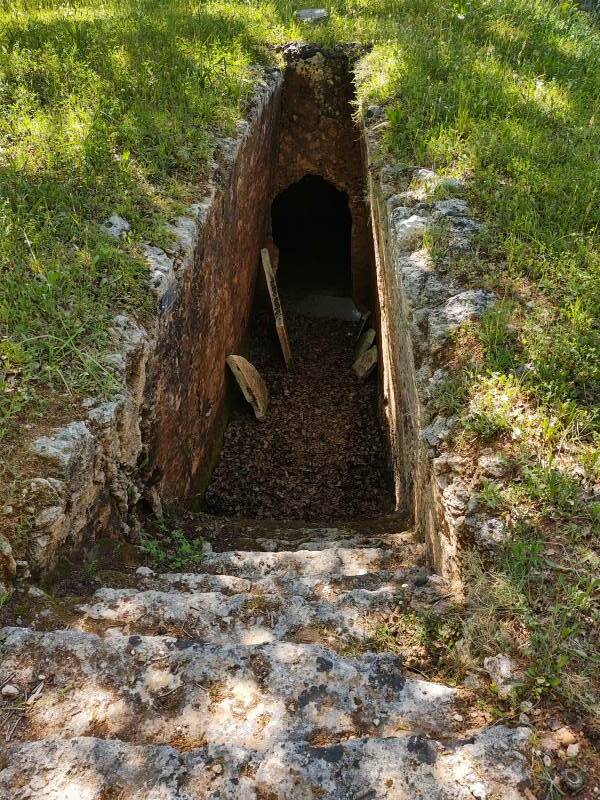
Tomb 24 is also quite large, with a long and deep passage. It also dates to the LM IIIA2-B1 period, 1385–1240 BCE.
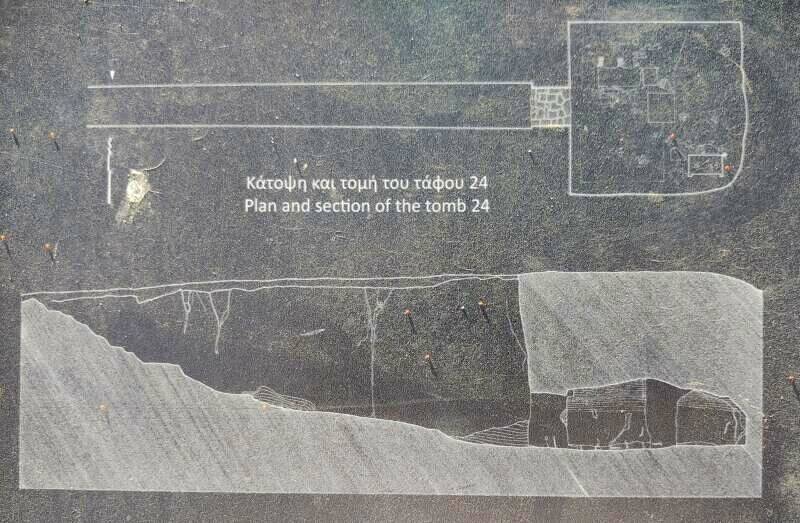
Its passage starts as steps that transition to a ramp.
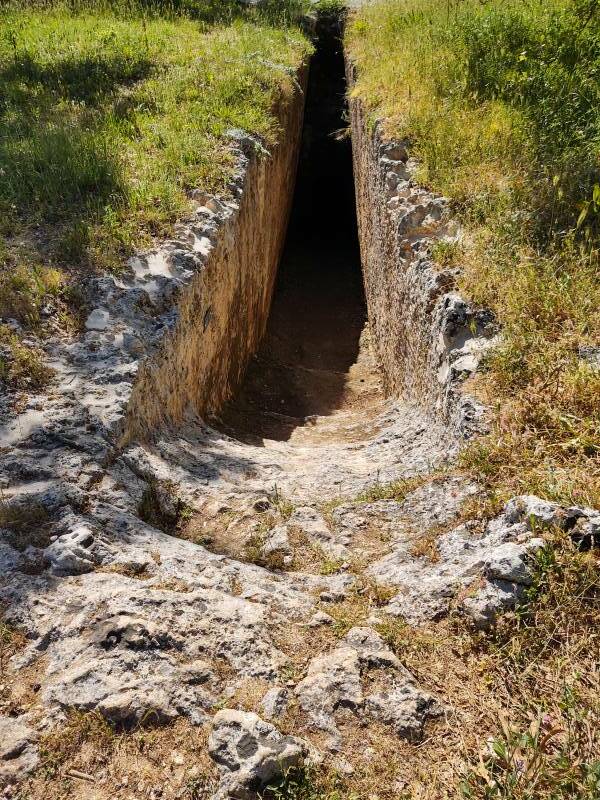

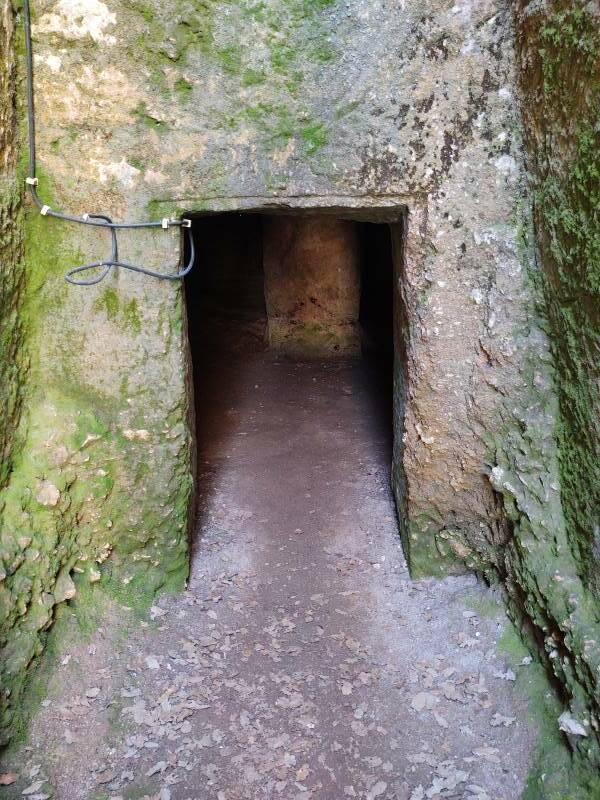
The floor of the chamber is cut to two levels, and there is a free-standing pillar in the center.
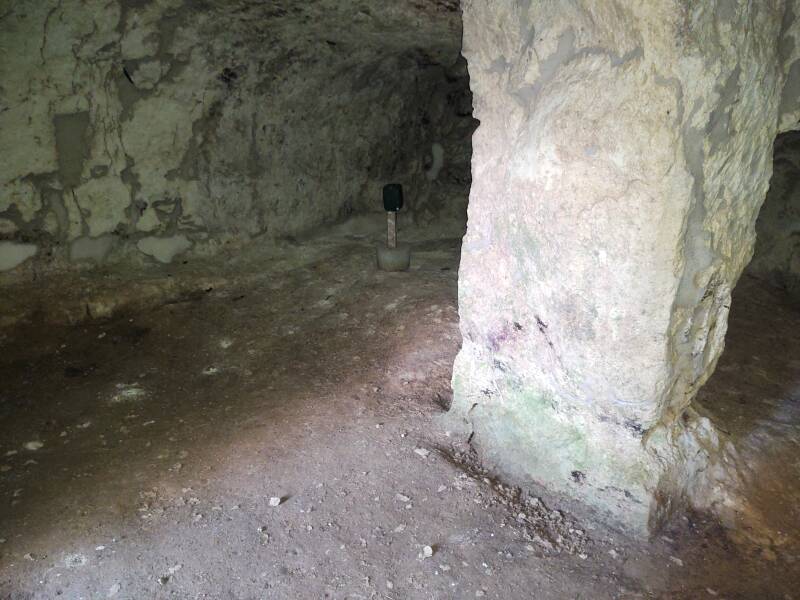
There were niches inside the chamber, on either side of the entry.
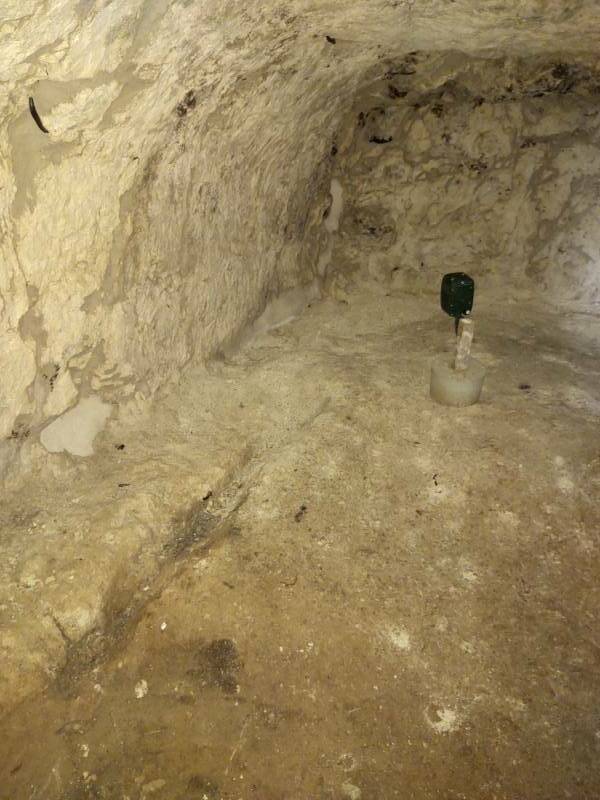
Larnaxes found in the chamber had painted scenes of deities and ritual hunting.
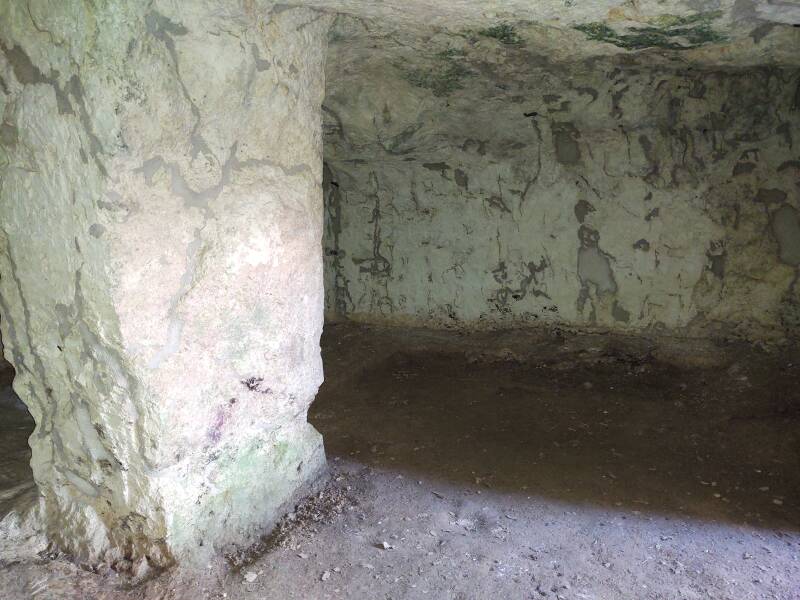
Very Late Minoan
The Late Minoan cemetery at Armeni is sometimes described as Post Minoan. However, it clearly was built by people from the Minoan civilization. This is instead of the Post-Palatial late period of the Minoan civilization, when they were still using existing palaces but weren't currently building more. Discussions of Minoan chronology are often confusing.
Sir Arthur John Evans presented himself as a one-person foundation in order to purchase the site of Knossos when Crete was still under Ottoman Turkish rule. When the Turks left in 1898 and Crete was free, archaeologists were eager to investigate Knossos. But then they discovered that Evans owned the entire two-hectare site.
Evans directed the excavation of Knossos from 1900 through 1935. He quickly found that it was a three-dimensional complex of over 1,000 rooms. The assumptions and bad science began immediately.
Arthur Evans and the Creation of Modernity at KnossosEvans had many preconceptions and dreams of how things should have been, including a major civilization that was matriarchal and peaceful. Instead of investigating what was there and then figuring out what that meant, he looked for evidence to support what he had long concluded must have been true. And when the evidence wasn't there, he had his artists and craftsmen create it.
See the page about my visits to Knossos for much more on Evans and his bad science. Reconstructed Knossos has elements of Art Nouveau and Art Deco design implemented in steel-reinforced concrete.
Evans decided that the Knossos complex must be the palace of the mythical King Minos of Crete. Therefore, the people living there must have been the Minoans.
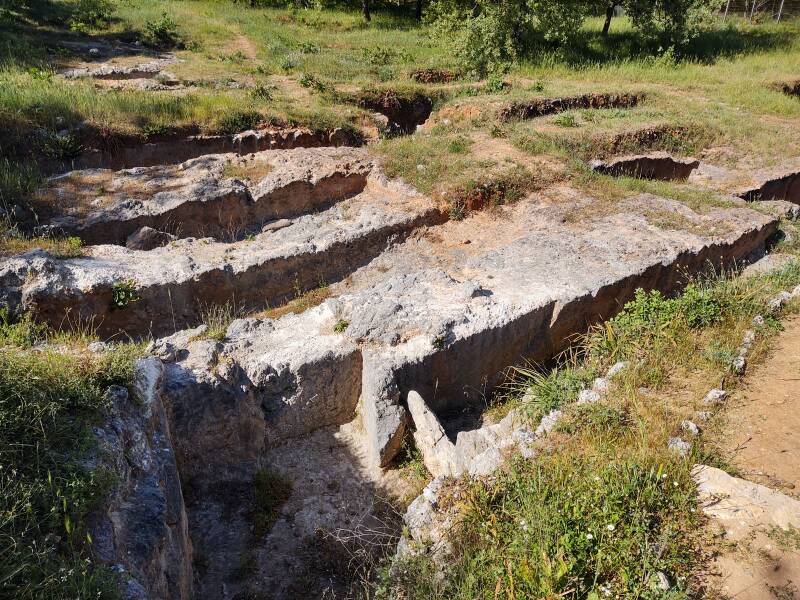
The name stuck, but we have no idea what the people called themselves. We don't know anything about the language they spoke, beyond being pretty certain that it had no close connection to Mycenaean Greek. The people probably came from Anatolia, in which case their language would be descended from languages spoken there.
Evans thought that time periods always came in groups of three. A civilization appeared, flourished, then declined, so there must be three major periods. Then each of those "naturally" divided into three sub-periods each.
Very early in his investigation of Knossos, meaning way before he had enough information to reach this conclusion, he announced that Minoan History was clearly divided into three major periods of Early, Middle, and Late Minoan. And furthermore, that each of these had three distinct sub-periods of I, II, and III. He was just starting to investigate the one site, while several "Minoan" sites across Crete were yet to be examined, or even discovered. His 3×3 division of time didn't hold up for later discoveries. New technologies such as radiocarbon dating and DNA analysis continue to revise the academic model of Minoan chronology.
Ancient Yersinia pestis and Salmonella enterica genomes from Bronze Age CreteWhat we know is that the Armeni cemetery was used roughly from the 14th through 12th century BCE. Other than Egypt, all the major civilizations around the eastern Mediterranean collapsed around 1177 BCE. These tombs are sometimes described as "Post Palatial", more recent terminology for Evans's LMIB, LMII, LMIIIA, and LMIIIB, with LMIII spanning 1400–1100 BCE.
Or, Continue Through Greece:
Where next?